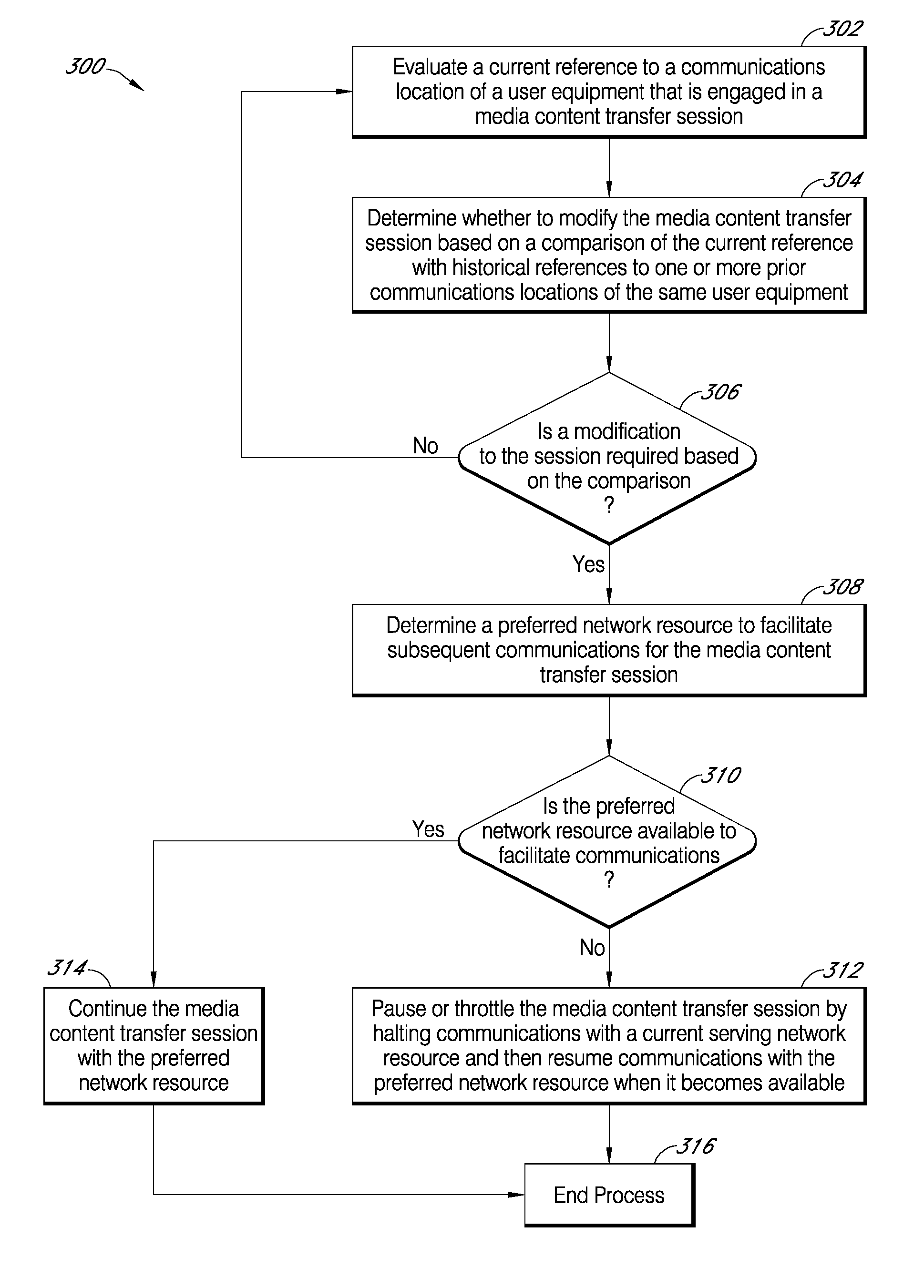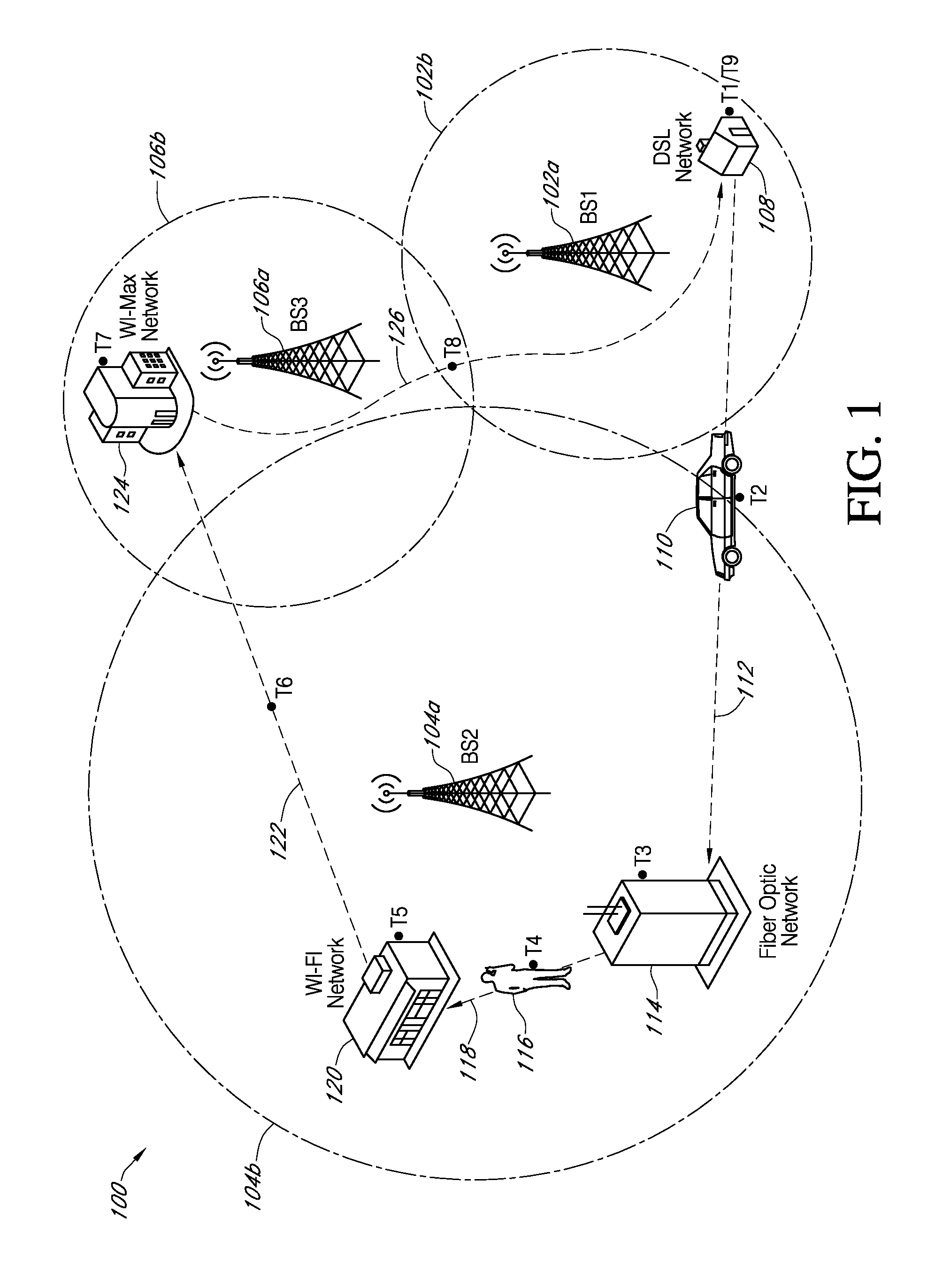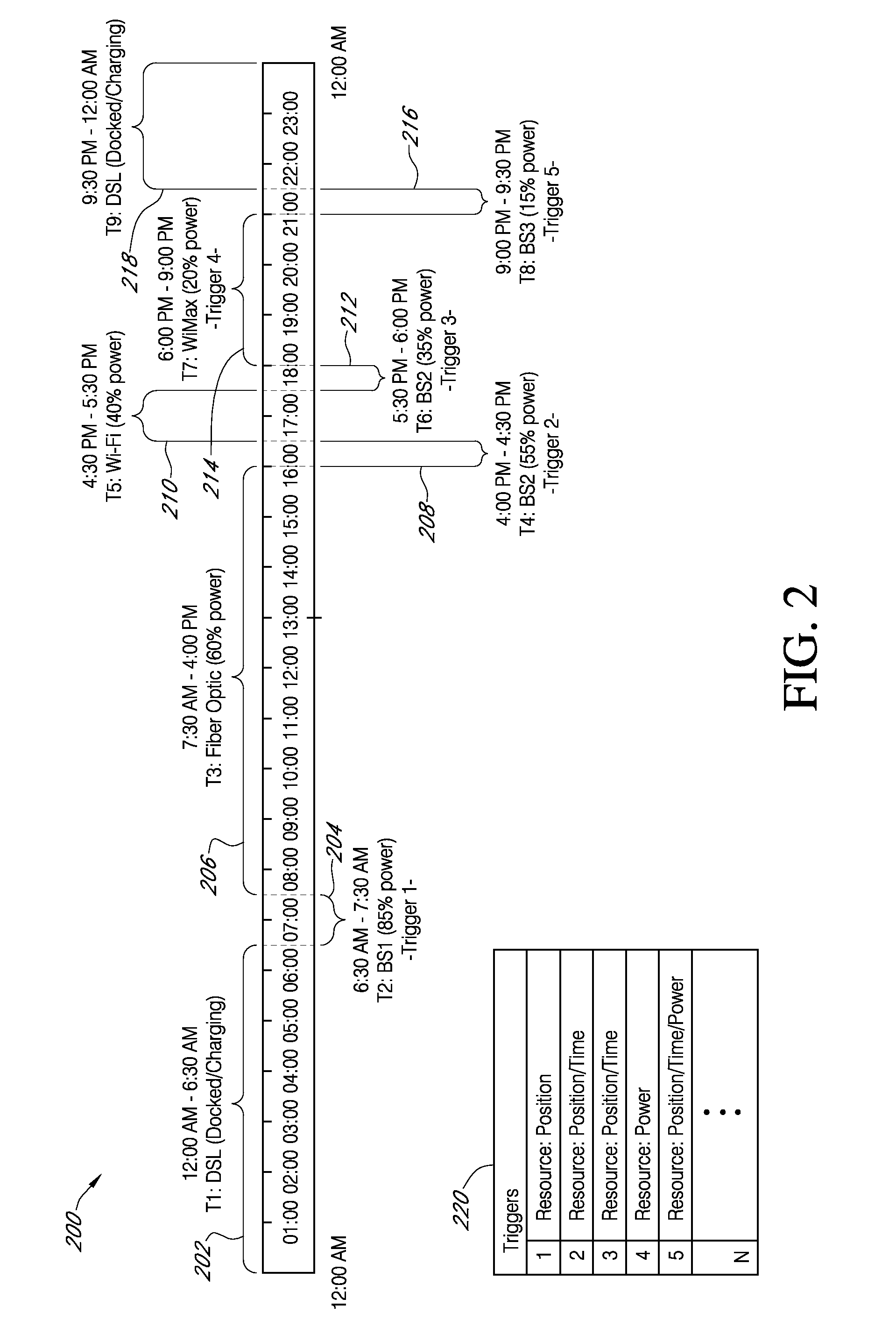Systems and methods for aligning media content delivery sessions with historical network usage
a technology of media content and network usage, applied in the field of systems and methods for optimizing data content delivery sessions, can solve the problems of almost all modern-day networks susceptible to congestion or degradation, and most service providers have struggled to provide sufficient communications infrastructure, so as to facilitate a less burdensome media content delivery
- Summary
- Abstract
- Description
- Claims
- Application Information
AI Technical Summary
Benefits of technology
Problems solved by technology
Method used
Image
Examples
Embodiment Construction
[0035]The present invention relates to systems and methods capable of optimizing media content delivery sessions by evaluating historical resource usage and resource state data, while scheduling one or more burdensome media content deliveries for a particular user or group of users. When performing various scheduling processes, usage patterns may be analyzed in combination with resource efficiency and resource availability information, to improve determinations associated with how particular media content delivery processes should proceed.
[0036]In an embodiment, human usage patterns may be recorded in accordance with where and when and what type of resources are routinely consumed. This usage information can be utilized to preferentially reallocate resource use towards periods and locations where media content delivery sessions may be less burdensome to the resource provider, the user, or both. Unlike methods of static usage prediction, the embodiments of the invention are able to i...
PUM
 Login to View More
Login to View More Abstract
Description
Claims
Application Information
 Login to View More
Login to View More - Generate Ideas
- Intellectual Property
- Life Sciences
- Materials
- Tech Scout
- Unparalleled Data Quality
- Higher Quality Content
- 60% Fewer Hallucinations
Browse by: Latest US Patents, China's latest patents, Technical Efficacy Thesaurus, Application Domain, Technology Topic, Popular Technical Reports.
© 2025 PatSnap. All rights reserved.Legal|Privacy policy|Modern Slavery Act Transparency Statement|Sitemap|About US| Contact US: help@patsnap.com



